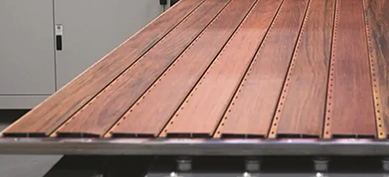PVC ceiling panels have a lot to offer the modern household. They are easy to install, cost effective and have a long lifespan. They are also fire resistant, making them an excellent alternative to conventional drywall and wood. However, pvc ceiling panel do have some disadvantages that you should be aware of.
Firstly, they are not as flexible as other materials. Therefore, it is important to mark your drill points accurately. This will prevent them from cracking or splintering when drilling into the plastic. You should also use moderate pressure, as too much can cause the bit to slip and damage the underlying material. When using a drill, it is best to use a carbide-tipped bit for hard plastics. This will ensure the holes are not damaged when screwing into place.
Another downside to pvc ceiling panels is that they can be difficult to work with. This can be a problem for people who want to hang lights and other fixtures on the ceiling. It may be necessary to hire a professional to install these items. This is because the panels can be drilled into, but the screws used to secure them cannot be removed.
These plastic ceiling panels are available in a wide range of colors and patterns. Some are designed to look like natural wood, while others have a more modern style. You can even get them in different textures and 3D designs. These panels are also waterproof and moisture resistant. This means that they can be installed in areas of the house that produce a lot of humidity and dampness, such as bathrooms or utility rooms. They are also easy to clean, with the help of a little bit of mildew or mould killer and water.
In addition to being durable and easy to clean, pvc ceiling panels are also lightweight. They are not as heavy as traditional gypsum ceilings, so they will not make the room feel stuffy or uncomfortable. They can also be easily uninstalled and moved to a new location if you decide to change the decor.
The pvc panels are also fire resistant, which makes them a great choice for homes and commercial spaces. They are a good alternative to drywall, which can be susceptible to bacterial growth and mold. They can also be cleaned with a disinfectant solution, which is safe for humans and animals.
Another benefit of pvc panels is that they can be painted, which gives homeowners more design options. They can be painted with a high-quality, water-resistant acrylic paint or a textured primer. They are also available in a wide range of colors, so you can find the perfect match for your home.
To install pvc ceiling panels, start by placing wooden battens around the area that you wish to decorate. Then, cut the first wall-panel to size and insert it into the trim, making sure that the tongue is in the groove and fastening it to the framework with internal or external corner profiles (No. 1) as required. Continue in the same way for the rest of the wall panels, remembering to leave about 5mm clearance between each panel and the edge trim.


 English
English Español
Español



